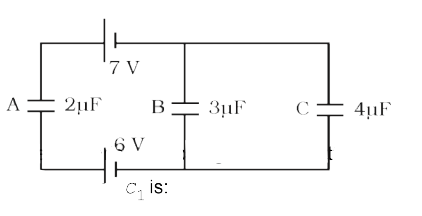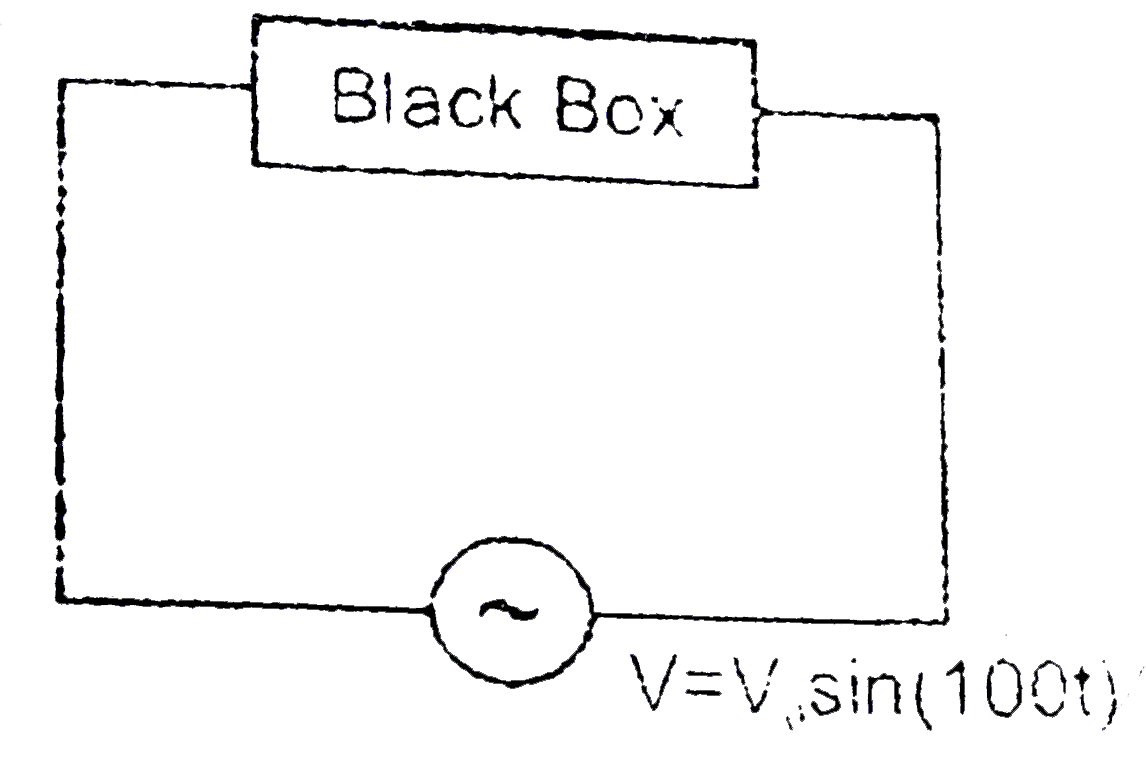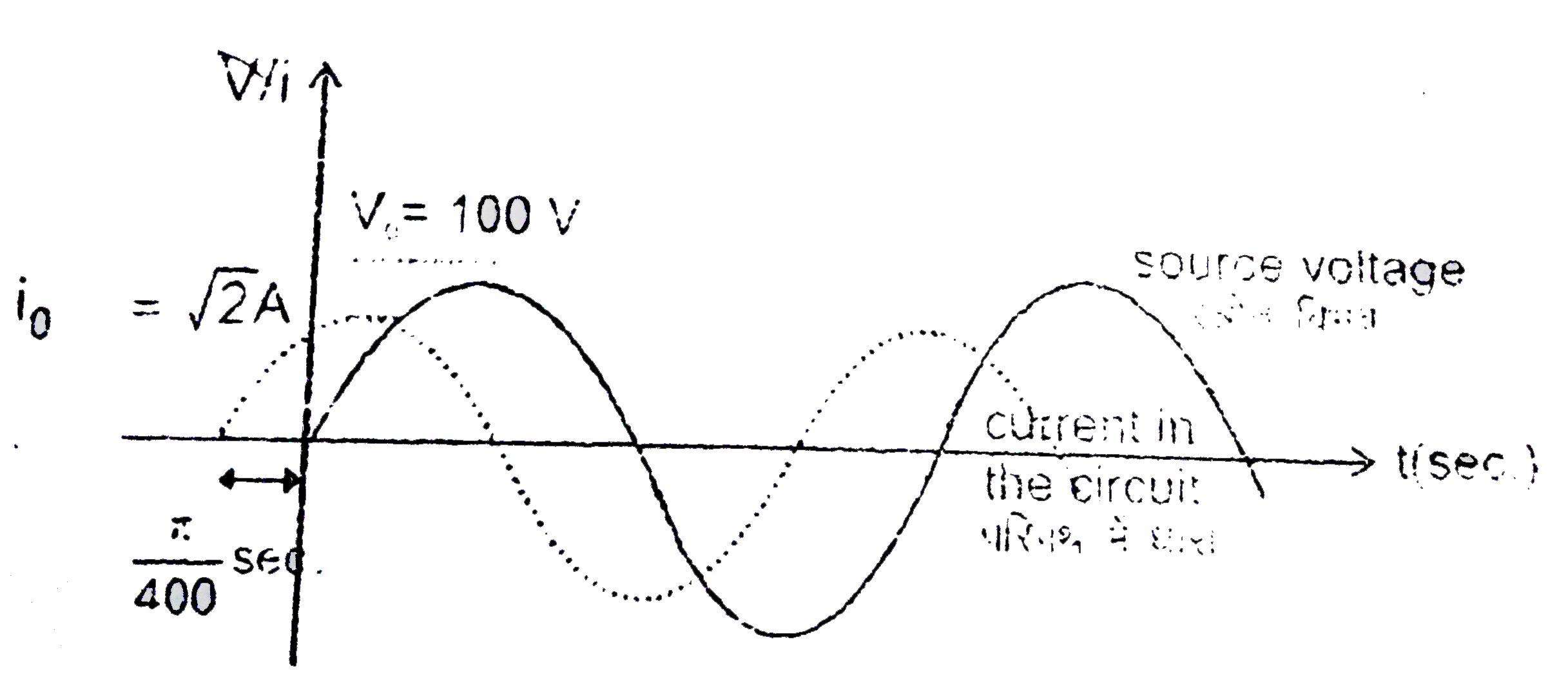An an ideal parallel LC circuit, the capacitor is charged by connecting it to a DC source which is then disconnected. The current in the circuit
Become zero instantaneously
Grows monotonically
Decay monotonically
Oscillates instantaneously.
The correct Answer is:D

When the capacitor is connected to a d.c. source and then disconnected, it charged and then it starts discharging through the inductor. An induced emf is produced in the circuit which opposes the growth of current in L. when the capacitor is fully discharged, the electric energy stored in the capacitor (i.e. 1/2 q2/C) gets converted fully into magnetic field energy (1/2LI2). As soon as the discharge of the capacitor is complete, current stops and the magnetic flux linked with L starts collapsing. therefore, an induced emf is again developed which starts recharging the capacitor in the opposite direction. when the recharging is completed, all magnetic energy stored in L appears as the electric energy between the plates of the capacitor. The entire process keeps on repeating and the energy taken from the cell keeps on oscillating between C and L. Hence the current in the circuit starts oscillating as soon as the d.c. source charging the capacitor is disconnected .
Similar Questions
A parallel plate capacitor is charged to a potential difference V by a dc source. The capacitor is then disconnected from the source. If the distance between the plates in doubled, state with reason how the following will change,
(i) electric field between the plates,
(ii) capacitance and
(iii) energy stored in the capacitor.
View SolutionA charged capacitro and an inductor are connected in series. At time t = 0 , the current is zero but the capacitor is charged, If T is the period of resulting oscillations, then the time after which current in the circuit becomes maximum , is
View SolutionIn an electric circuit, there is a capacitor of reactance 100 Ω connected across the source of 300 volt. The displacement current will be
View SolutionA student in a lab took a coil and connected it to a 12VDC source. He measures the steady state current in the circuit to be 4A. He then replaced the 12VDC source by a 12V,(ω=50rads)AC source and observes that the reading in the AC ammeter is 2.4A. He then decides to connect a 2500μF capacitor in series with the coil and calculate the average power developed in the circuit. Further he also decides to study the variation in current in the circuit (with the capacitor and the battery in series).
Which of the following graph roughly matches the variation of current in the circuit (with the coil and capacitor connected in the series) when the angulr frequency is decreased from 50 rad/s to 25 rad/s?
View SolutionAn ideal capacitor of capacitance 0.2μF is charged to a potential difference of 10V. The charging battery is than disconnected. The capacitor is then connected to an ideal inductor of self inductance 0.5mH. The current at a time when the potential difference across the capacitor is 5V is :
View SolutionA parallel plate capacitor is charged and the charging battery is then disconnected. If the plates of the capacitor are moved farther apart by means of insulating handles:
View SolutionThree capacitors A,B and C are connected in a circuit as shown in figure. What is the charge in μC on the capacitor B?

View SolutionA voltage source V=V0sin(100t) is connected to a black box in which there can be either one element out of L,C,R or any two of them connected in series.
At steady state, the variation of current in the circuit and the source voltage are plotted together with time.using an oscilloscope, as shown
If AC source is removed, the circuit is shorted for some time so that capacitor is fully discharge and then a battery of constant EMF is connected across the black box, at t=0.The current in the circuit will-


View SolutionA parallel plate capacitor 20 μF is being charged by a voltage source whose potential is changing at the rate of 3 V/s. The conduction current through the connecting wires, and the displacement current through the plates of the capacitor, would be, respectively:
View SolutionAfter switch is closed in the LC circuit shown in the figure, the charge on the capacitor is sometimes zero, but at such instants the current in the circuit is not zero. How is this behaviour possible ?

View Solution
